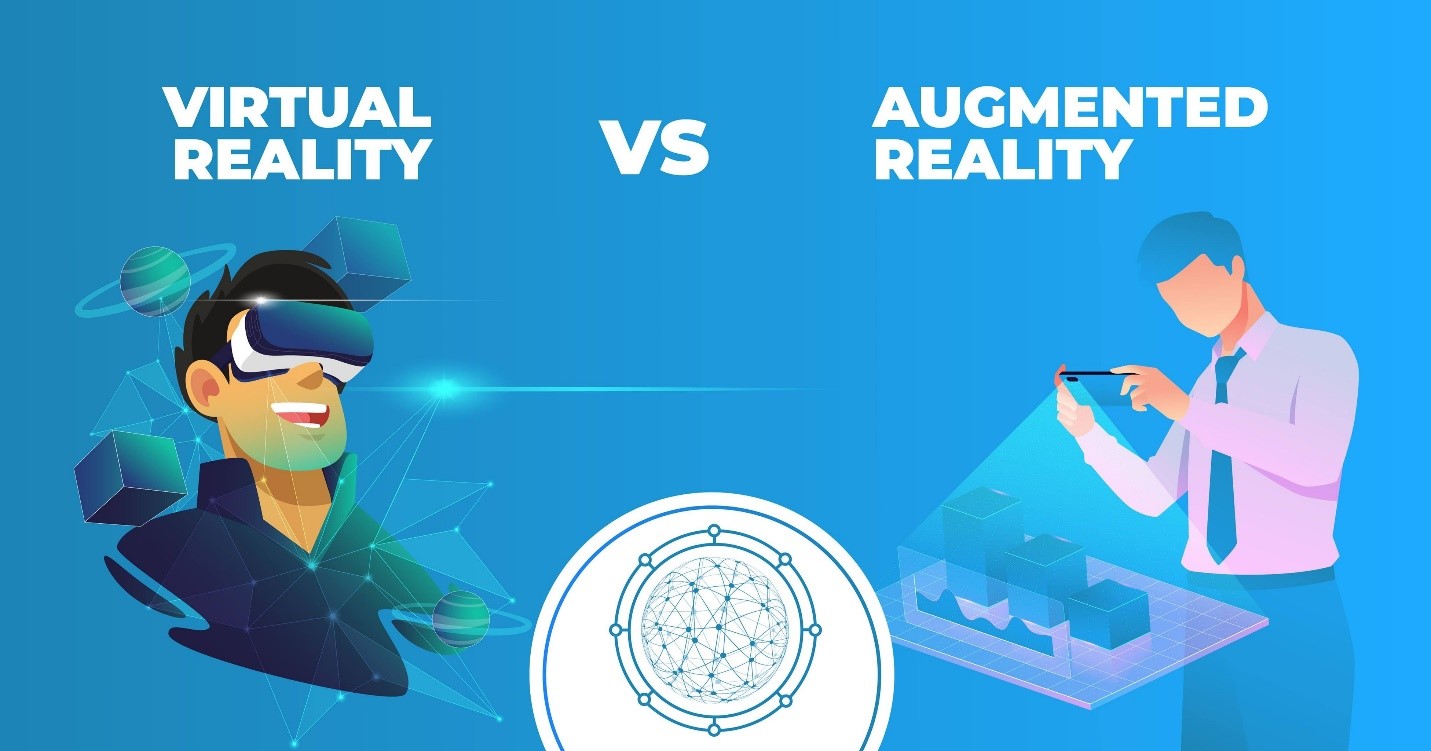Augmented Reality vs. Virtual Reality: Applications and Differences
In the ever-evolving realm of technology, Augmented Reality (AR) and Virtual Reality (VR) have emerged as distinct and captivating innovations that revolutionize how we interact with digital content and the world around us. These immersive technologies have found their way into various industries, opening up possibilities. In this article, we’ll explore the applications and differences between Augmented Reality and Virtual Reality, shedding light on their unique features and their vast potential.
Understanding Augmented Reality
Augmented Reality, often abbreviated as AR, is a technology that blends digital information and virtual objects with the real world. It enhances our perception of Reality by overlaying computer-generated elements onto our physical surroundings, typically viewed through a smartphone, tablet, AR glasses, or a heads-up display (HUD). AR enriches our sensory experience by providing real-time, context-aware information, making it an invaluable tool in various domains.
Applications of Augmented Reality
- Gaming and Entertainment: AR has overtaken the gaming world with popular titles like Pokémon GO and Harry Potter: Wizards Unite. These games encourage players to explore the real world while interacting with virtual elements.
- Retail and E-Commerce: Augmented Reality is transforming the way we shop. AR apps allow customers to visualize products in their space before purchasing, enhancing the online shopping experience.
- Education: AR is revolutionizing education by making learning more interactive and engaging. Students can explore 3D models, dissect virtual organisms, and travel through historical events from their classrooms.
- Healthcare: Surgeons are utilizing AR during complex procedures. It provides them real-time data and 3D visualizations, improving precision and patient outcomes.
- Navigation: Navigation apps with AR features offer real-time directions, restaurant recommendations, and local points of interest, making it easier for users to explore unfamiliar areas.
Unpacking Virtual Reality
Virtual Reality, often referred to as VR, offers an entirely immersive digital experience by replacing the real world with a computer-generated environment. Users are transported to a simulated reality through VR headsets, where they can interact with this artificial environment as if it were real.
Applications of Virtual Reality
- Gaming and Simulation: VR gaming takes immersion to the next level. Players can step into fantastical worlds, battle monsters, and experience a heightened sense of presence.
- Training and Education: VR is used in training simulations for pilots, astronauts, and medical professionals. It allows learners to practice skills in a risk-free environment.
- Therapy and Healthcare: Virtual Reality is used for therapeutic purposes, such as exposure therapy for phobias and pain management during medical procedures.
- Architectural Visualization: Architects and designers use VR to create immersive walkthroughs of buildings and spaces, enabling clients to experience designs before construction begins.
- Virtual Tourism: VR enables individuals to explore remote destinations from the comfort of their homes, providing a new dimension to travel experiences.

Key Differences Between AR and VR
While both Augmented Reality and Virtual Reality offer immersive experiences, they differ significantly in their approach and applications. Here are the key distinctions:
Interaction with the Real World:
- AR enhances the real world by overlaying digital elements on it.
- VR replaces the real world with a virtual environment, offering complete immersion.
Devices:
- AR is commonly experienced through smartphones, tablets, and AR glasses.
- VR necessitates using dedicated headsets, like the Oculus Rift or HTC Vive.
Use Cases:
- AR finds applications in gaming, retail, education, and navigation.
- VR excels in gaming, simulations, training, and immersive storytelling.
Level of Immersion:
- AR provides a partial immersion, allowing users to remain aware of their surroundings.
- VR offers full immersion, transporting users to a different reality.
Physical Movement:
- AR often involves limited physical movement, such as pointing a smartphone camera.
- VR encourages more physical activity as users interact with the virtual environment.
In conclusion, Augmented Reality and Virtual Reality are remarkable technologies with diverse applications that continue to shape various industries. While AR enhances our real-world experiences with digital overlays, VR immerses us in entirely virtual realms. Each technology has unique strengths and limitations, making it suitable for different purposes. As technology advances, the boundaries between AR and VR may blur, leading to even more exciting possibilities in the future.

